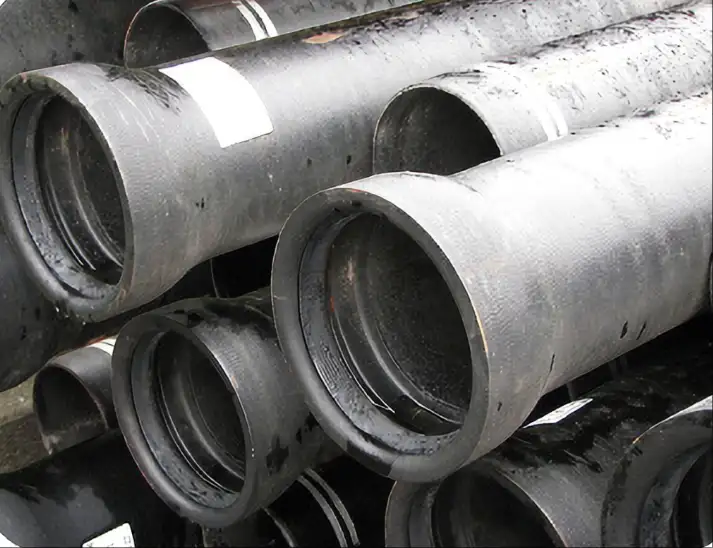When it comes to plumbing a toilet, selecting the appropriate pipe material is crucial for ensuring durability, efficiency, and compliance with local building codes. The choice of material impacts installation ease, cost, and long-term maintenance. This guide delves into the most commonly used pipe materials for toilet plumbing: PEX, PVC, copper, and ductile iron.

1. PEX (Cross-Linked Polyethylene) Pipes
Overview
PEX is a flexible plastic piping material that has gained popularity in residential plumbing due to its ease of installation and cost-effectiveness.
Advantages
-
Flexibility: Easily bends around corners, reducing the need for fittings.
-
Freeze Resistance: Less likely to burst in freezing temperatures compared to rigid pipes.
-
Corrosion Resistance: Not susceptible to corrosion or scale buildup.
-
Cost-Effective: Generally less expensive than copper and PVC.
Disadvantages
-
UV Sensitivity: Degrades when exposed to sunlight; not suitable for outdoor use unless protected.
-
Chemical Leaching: Potential for leaching of chemicals if not properly certified.
-
Mechanical Damage: Can be damaged by rodents or sharp objects.
2. PVC (Polyvinyl Chloride) Pipes
Overview
PVC is a rigid plastic pipe commonly used for drain, waste, and vent (DWV) systems.
Advantages
-
Lightweight: Easy to handle and install.
-
Corrosion Resistance: Does not rust or corrode.
-
Cost-Effective: One of the most affordable plumbing materials.
-
Smooth Interior: Reduces friction, leading to better flow rates.
Disadvantages
-
Temperature Sensitivity: Not suitable for hot water lines as it can warp.
-
UV Degradation: Degrades when exposed to sunlight; should be used underground or in protected areas.
-
Brittleness: Can crack under impact or extreme temperatures.
3. Copper Pipes
Overview
Copper has been a trusted material in plumbing for decades due to its durability and reliability. Available in three types—K, L, and M—copper pipes are suitable for various applications, including water supply lines and heating systems.
Advantages
-
Durability: Copper pipes can last over 50 years with proper maintenance.
-
Corrosion Resistance: Resistant to rust and corrosion, making them ideal for water supply lines.
-
Antimicrobial Properties: Copper naturally inhibits the growth of bacteria.
-
Recyclability: Copper is 100% recyclable without loss of quality.
Disadvantages
-
Cost: Copper pipes are more expensive than other materials.
-
Installation: Requires professional installation due to the need for soldering.
-
Susceptibility to Acidic Water: Water with a low pH can corrode copper over time.
4. Ductile Iron Pipes
Overview
Ductile iron pipes are commonly used in municipal water systems due to their strength and longevity.
Advantages
-
High Strength: Can withstand high pressures and external loads.
-
Longevity: Service life can exceed 100 years with proper maintenance.
-
Fire Resistance: Non-combustible and can withstand fire exposure.
-
Recyclability: Made from recycled materials and fully recyclable.
Disadvantages
-
Weight: Heavier than other materials, making transportation and installation more challenging.
-
Cost: More expensive than plastic alternatives.
-
Corrosion: Susceptible to corrosion if not properly coated or maintained.
Comparison Table
| Pipe Material | Best Use Case | Lifespan | Cost | Flexibility | Corrosion Resistance | UV Resistance | Ease of Installation |
|---|---|---|---|---|---|---|---|
| Copper | Water supply lines | 50+ years | High | Low | Excellent | Poor | Moderate |
| PEX | Residential plumbing | 40+ years | Moderate | High | Excellent | Poor | Easy |
| PVC | Drainage systems | 25+ years | Low | Low | Excellent | Poor | Easy |
| Ductile Iron | Municipal water systems | 100+ years | High | Low | Good | Excellent | Moderate |
Frequently Asked Questions (FAQs)
1. Which pipe is best for residential plumbing?
The best pipe for residential plumbing depends on the specific needs of the system. For water supply lines, copper and PEX are popular choices due to their durability and ease of installation. For drainage systems, PVC is commonly used because of its affordability and resistance to corrosion.
2. Can PEX be used for hot water lines?
Yes, PEX can be used for hot water lines. However, it’s important to ensure that the PEX is rated for hot water applications, as some types may degrade at high temperatures. Always check the manufacturer’s specifications before installation.
3. Is PVC safe for drinking water?
PVC pipes are generally considered safe for drinking water when used in cold water applications. However, they are not suitable for hot water lines, as they can warp and release harmful chemicals. For hot water, CPVC (Chlorinated Polyvinyl Chloride) pipes are a better alternative.
4. How long do ductile iron pipes last?
Ductile iron pipes have a service life that can exceed 100 years with proper maintenance. They are highly durable and resistant to external pressures, making them ideal for municipal water systems.
5. What are the disadvantages of copper pipes?
While copper pipes are durable and have antimicrobial properties, they are more expensive than other materials. They also require professional installation due to the need for soldering and can be susceptible to corrosion in acidic water conditions.
Conclusion
Choosing the right plumbing pipe material is essential for the efficiency and longevity of your plumbing system. Copper, PEX, PVC, and ductile iron each offer unique advantages and are suitable for different applications. Consider factors such as cost, installation requirements, and the specific needs of your plumbing system when making a decision. Consulting with a professional plumber can also provide valuable insights tailored to your specific situation.
